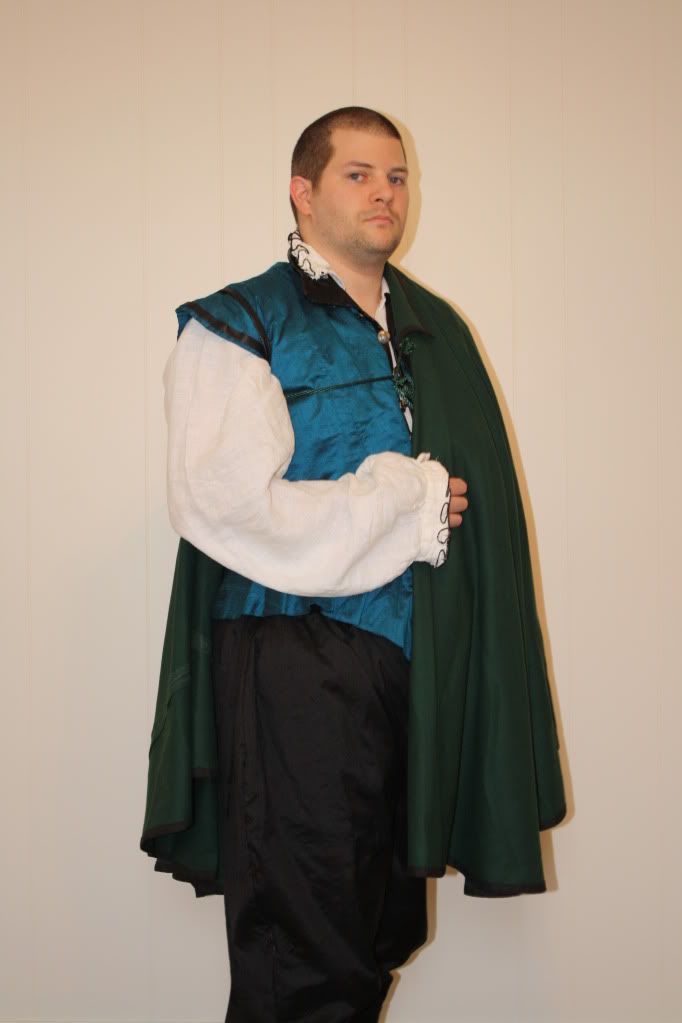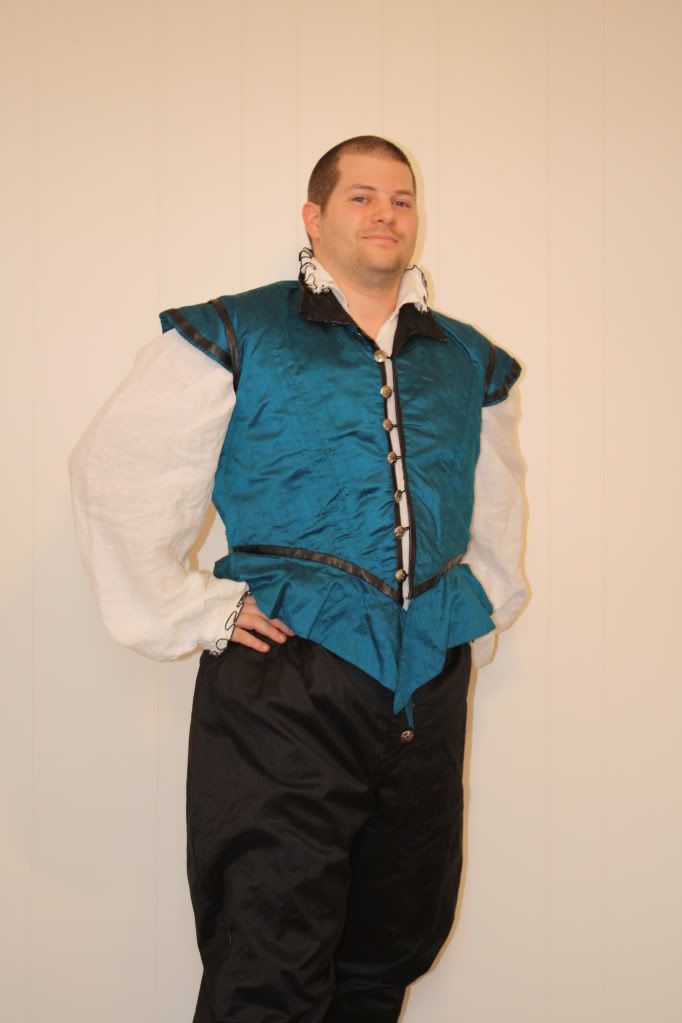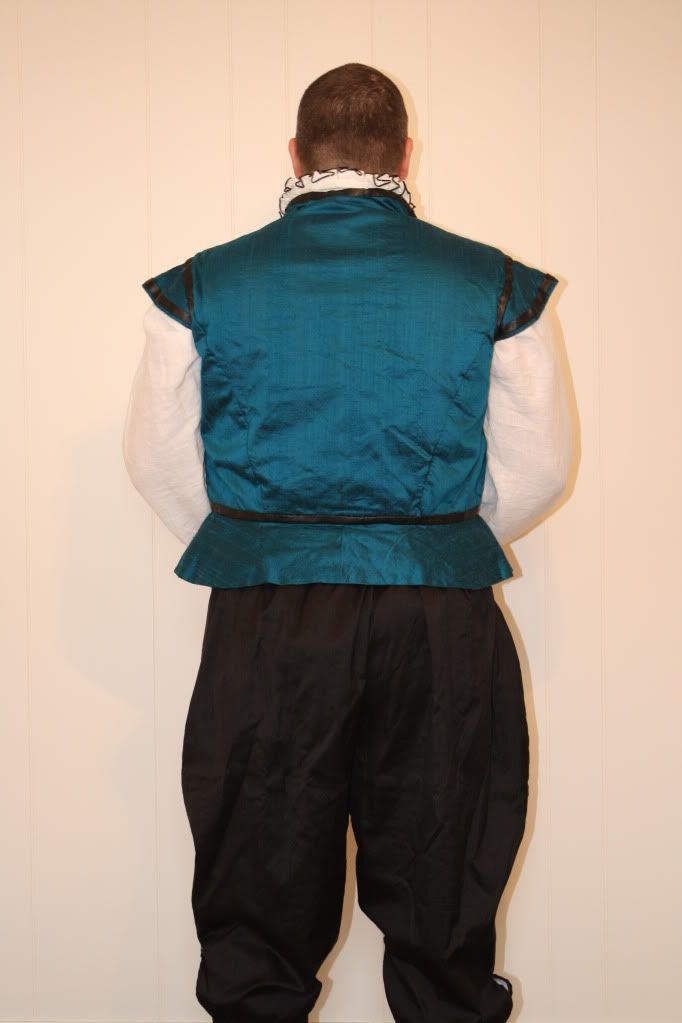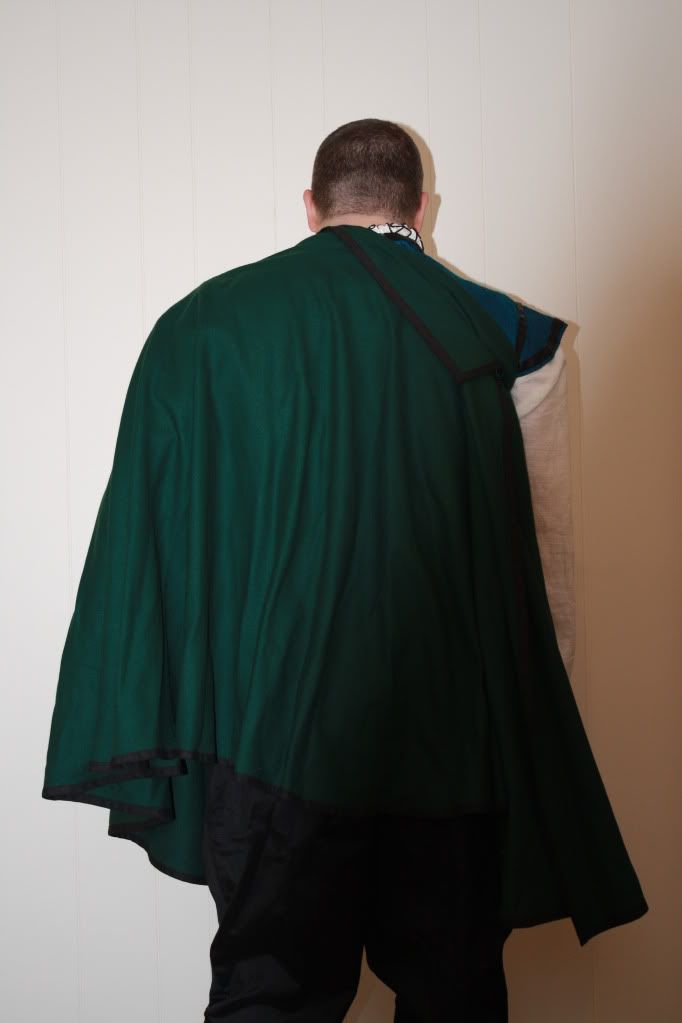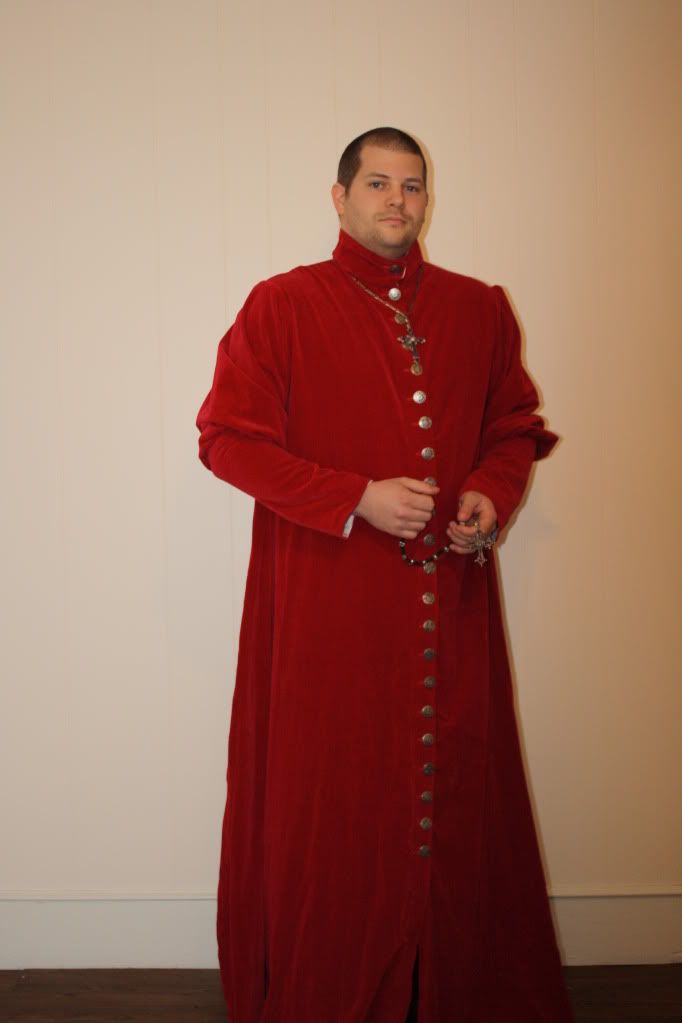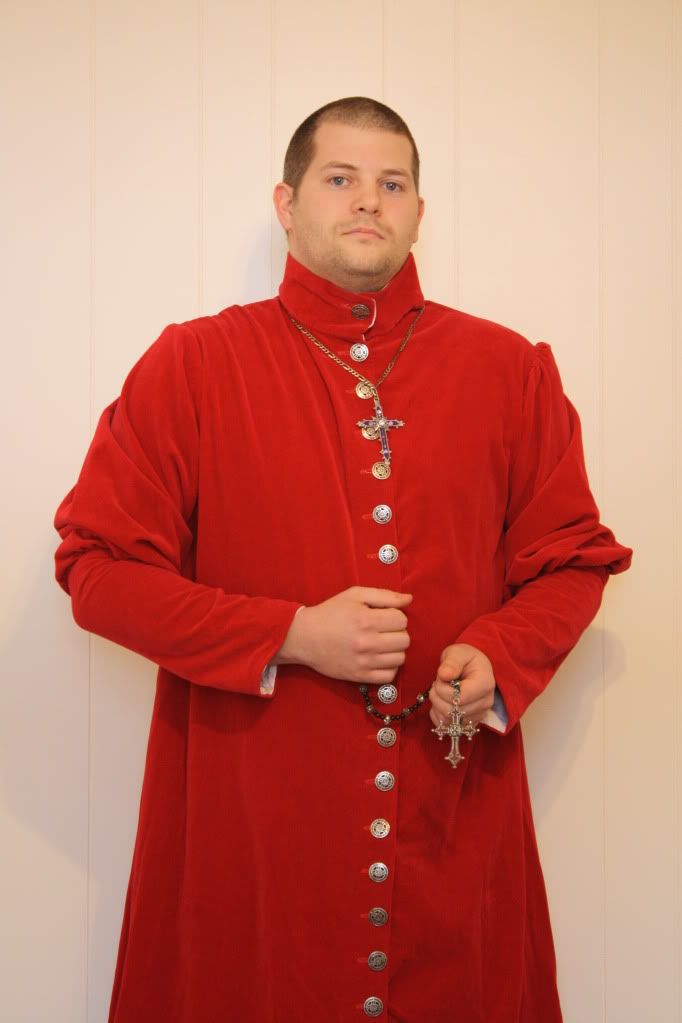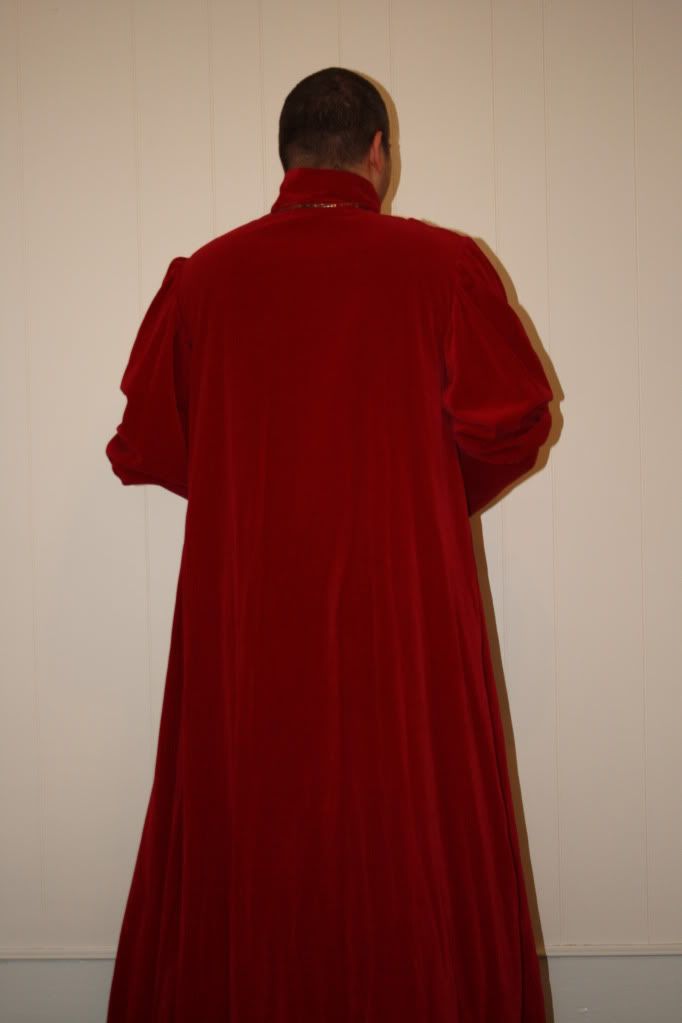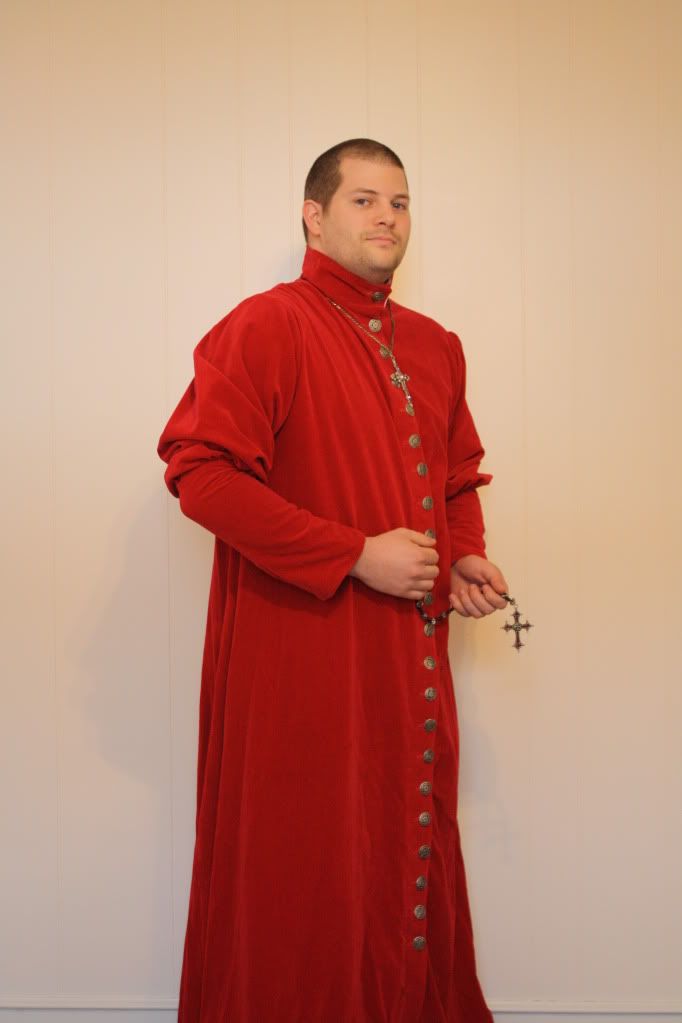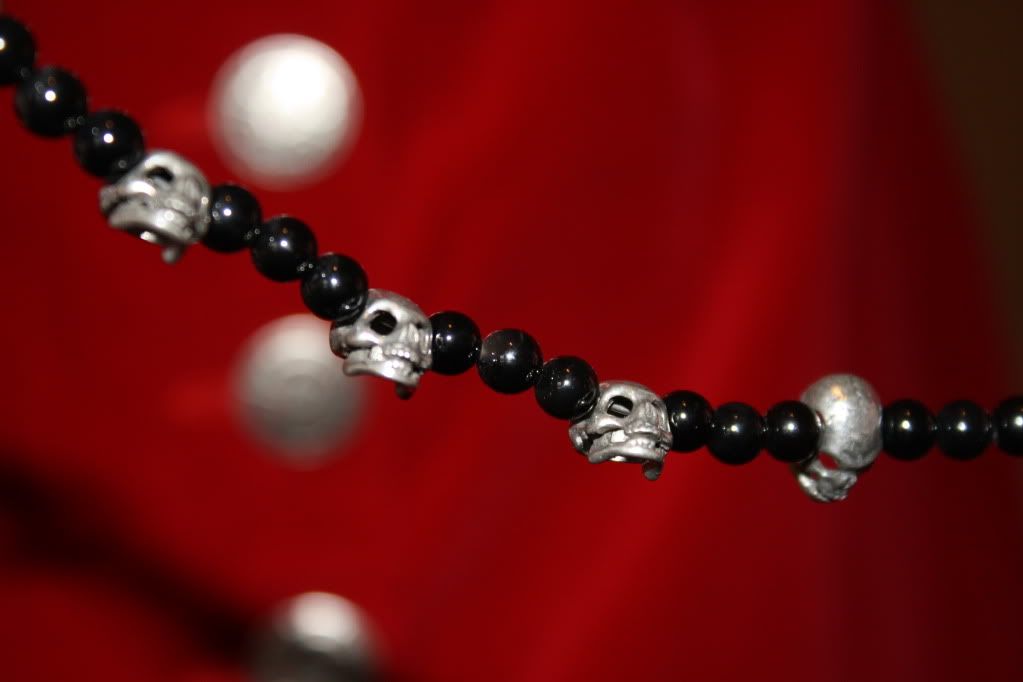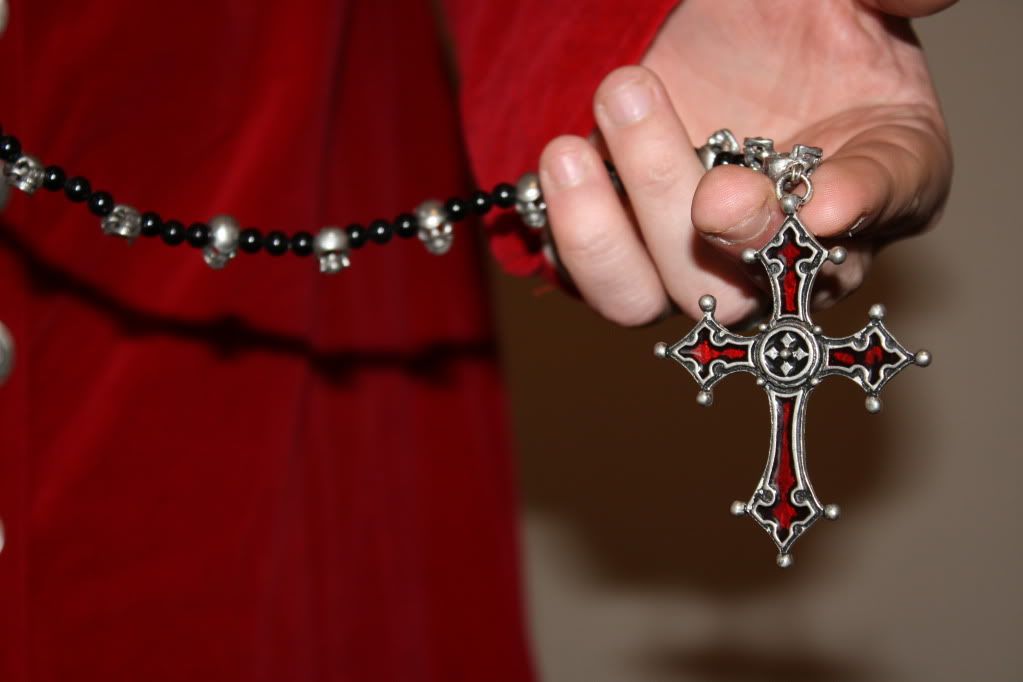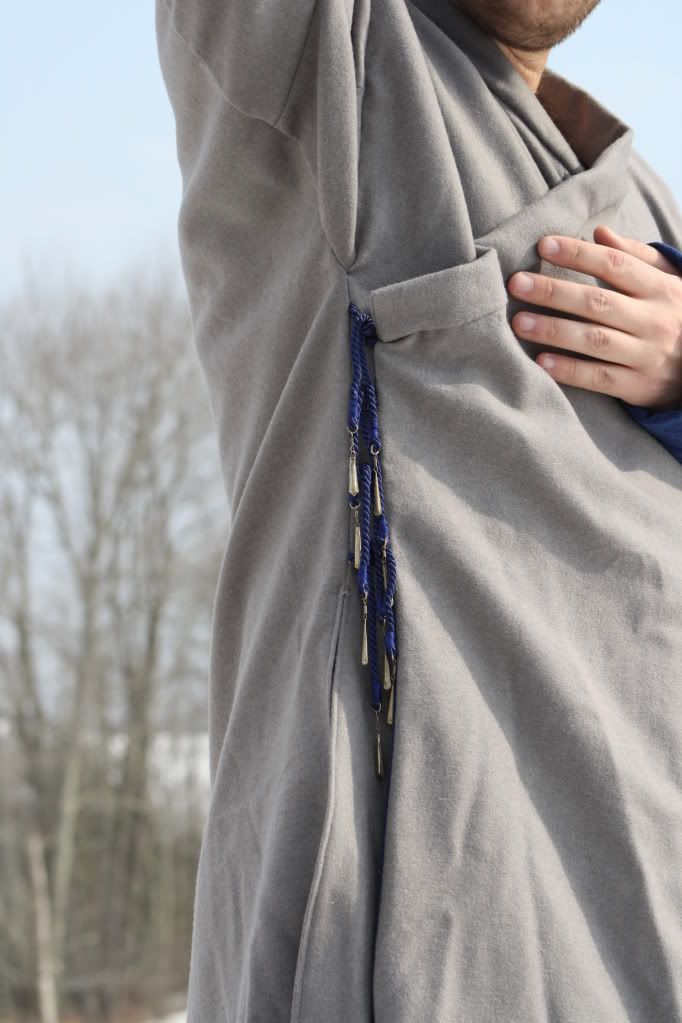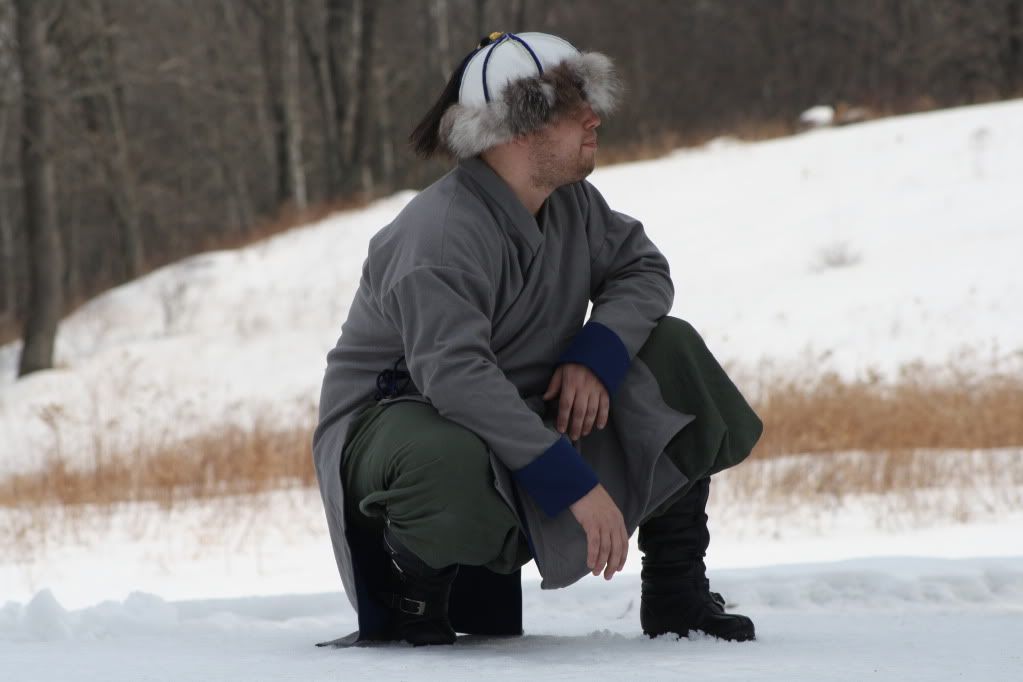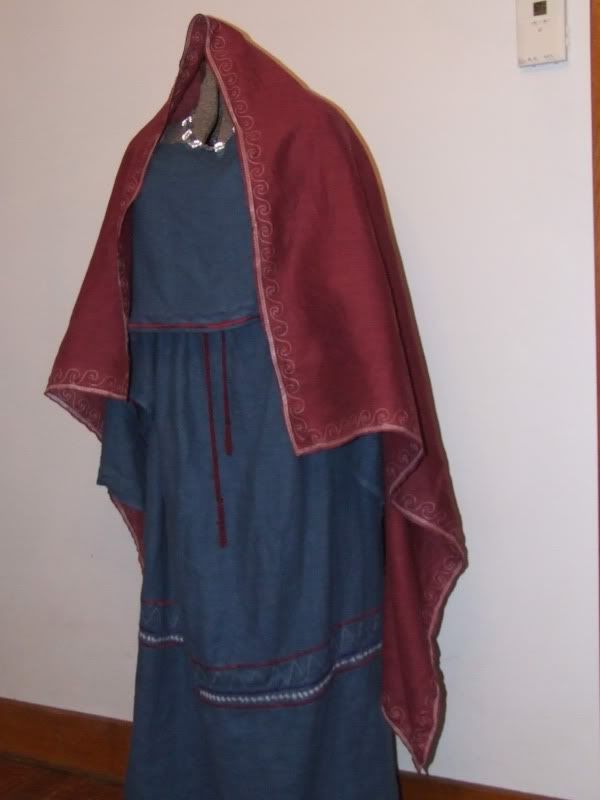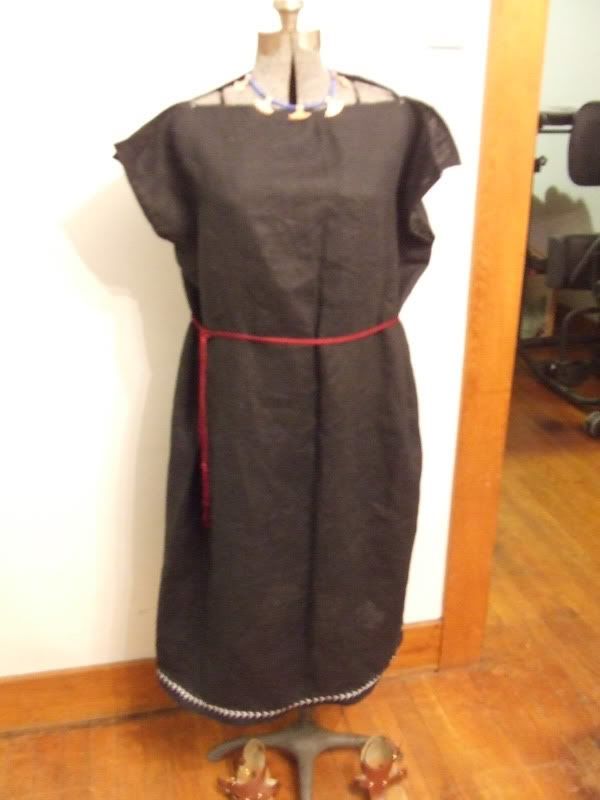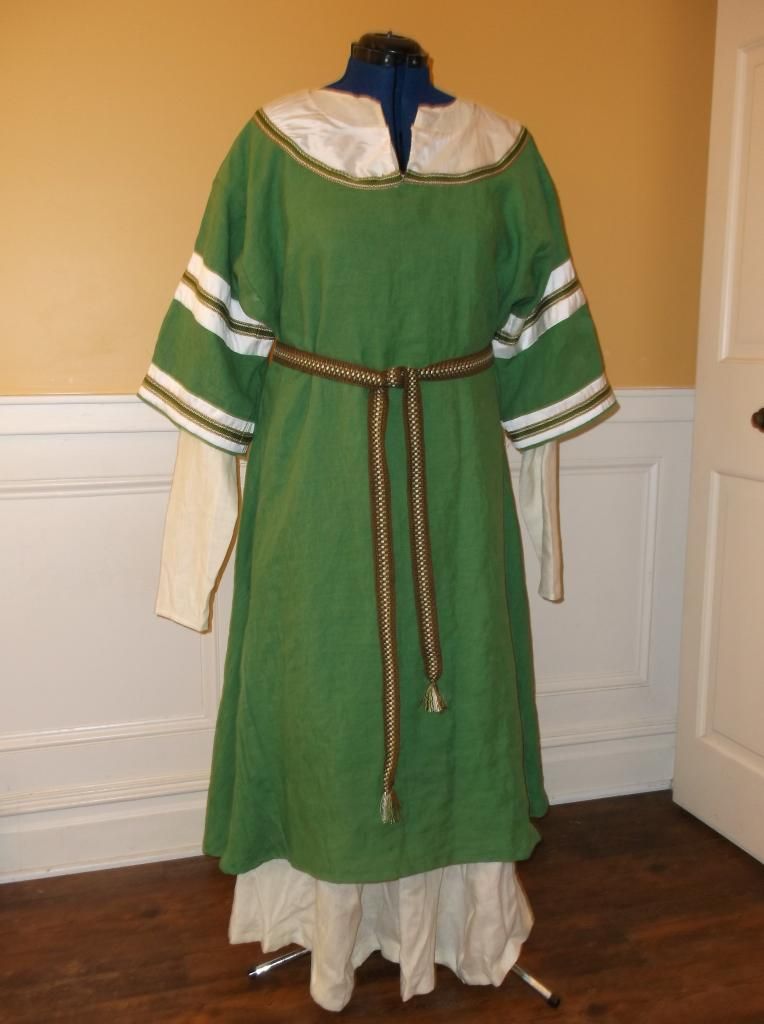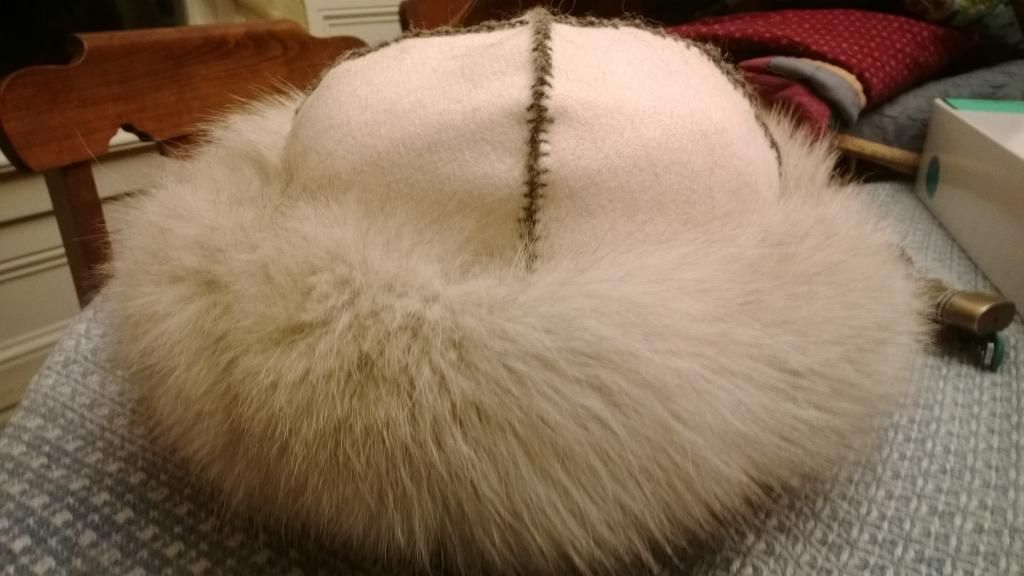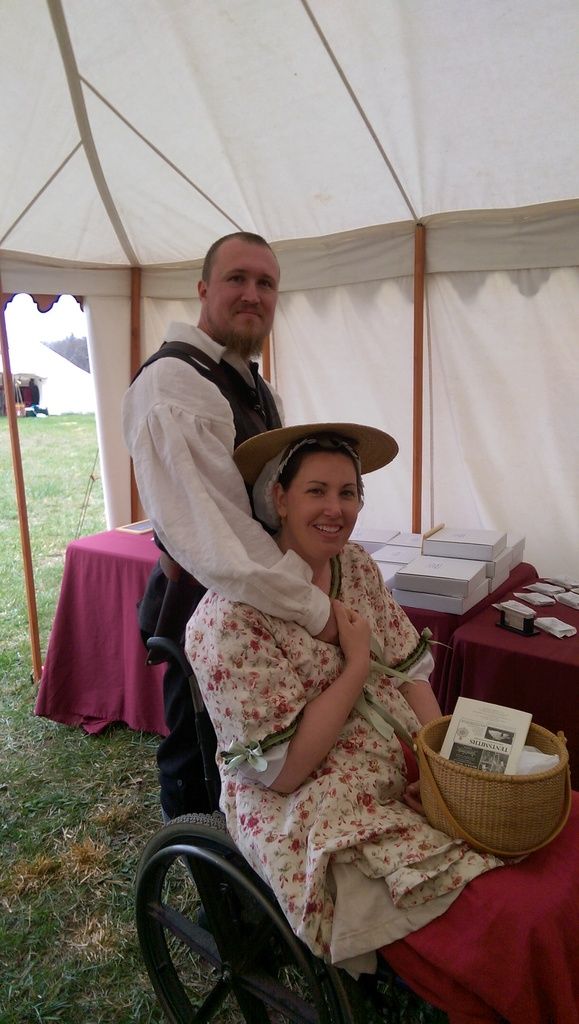My mom's Elizabethan comfort gown. After many years of scrambling to find a dress that would work for her to wear to the Faire, I finally got the bright idea of just making her one of her own. She doesn't like to wear things with boning or a ton of layered pieces to tromp around the faire all day, so I made her a comfort gown. The over dress is one piece and buttons up the front, she also has a loose shirt and a dark blue drawstring skirt underneath. I wanted something simple, loose (since the PA ren faire can get pretty hot or very cold, depending on what month you go) and most importantly, something that could be donned easily in a parking lot. People who dress for faires understand why. This fit the bill.
Unfortunately, this is the only picture I have of this outfit. I'm hoping to get better and more detailed ones someday.
Saturday, February 26, 2011
Blue and Black Elizabethan
In an effort to get things updated, I'm trying to work through the backlog of garb that was made but never photographed, things that got taken off the sewing table and worn out the door but somehow never made it into pictures or write ups. Now I'm tracking down people and making them come back for pictures. This is one of those outfits, and Jake was nice enough to come over on a day off to pose for me.
Jake's Elizabethan is a really early project, probably somewhere around 2006-2007. At the time, it seemed pretty fancy. Now I'll probably have to file it under upper-middle class. I guess that goes to show how far I've come.
The doublet is made out of blue dupioni and trimmed with a faux leather trim. I think that's a nice way of saying pleather. It was definitely pleather. And probably the most chemically and synthetic thing I've ever put on garb. It worked out in the end, but it made me itch like mad.
Jake's Elizabethan is a really early project, probably somewhere around 2006-2007. At the time, it seemed pretty fancy. Now I'll probably have to file it under upper-middle class. I guess that goes to show how far I've come.
The doublet is made out of blue dupioni and trimmed with a faux leather trim. I think that's a nice way of saying pleather. It was definitely pleather. And probably the most chemically and synthetic thing I've ever put on garb. It worked out in the end, but it made me itch like mad.
The pants are made out of black silk dupioni and both pants and doublet are buttoned with silver buttons. The pattern was Margo Anderson's Men's Elizabethan.
The sword cloak was made out of green wool and is a half circle cloak. It's trimmed in black cotton bias.
Thursday, February 24, 2011
Cardinal Robes
This is one of those projects where I had the chance to throw historical accuracy out the window and play with aesthetic rather than pouring over pictures and trying to get every last detail right.
 I was asked to make cardinal robes for Jake to wear to a "Heaven and Hell" party. He wanted something that mimicked the look of Cardinal Wolsey in The Tudors. We played around with a lot of pictures that were released from the show and mixed together different ideas until we had a concept we both liked.
I was asked to make cardinal robes for Jake to wear to a "Heaven and Hell" party. He wanted something that mimicked the look of Cardinal Wolsey in The Tudors. We played around with a lot of pictures that were released from the show and mixed together different ideas until we had a concept we both liked.The robes are made out of red cotton velvet and lined with white cotton. The buttons are silver with stylized crosses.
The pattern was modified from Margo Anderson's Elizabethan Women's Wardrobe and it was loosely based on the women's comfort gown. The pattern had to be adapted quite a bit in the length and shoulders to make it fit a gentleman of Jake's height. I wanted to make it as loose and comfortable as possible, since it was going to be worn primarily at Pennsic parties and the last thing anyone wants to be doing at a party is fussing with their clothes.
My favorite part of the project was the "rosary." Since the entire concept for the outfit was a bit blasphemous- as was the party it was being worn to- we decided to go all out.
Apparently, there was a historical precedent for skull rosaries in the 16th century, so we weren't too terribly far off.
Picture taken from Sapphire and Sage, who cite it as being a "Skull Rosary, Late 16th Century, Spain." They also offer really cool replicas for sale, as well as some other pretty amazing jewelry for garb.
While I didn't get to attend the "Heaven and Hell" party, Jake did report back to me that the outfit was a hit, and over three years later it's still one of his favorites. I have to admit that it's one of mine too, although it is still a bit disturbing to watch his transformation into "religious figure."
Thursday, February 17, 2011
Mongolian Coat
In every group of people, there's always someone who marches to an entirely different drummer. In our SCA household, that person is Morwin. In a group comprised of greeks who occasionally dabble in 14th century or renaissance, we have one lone mongol, usually easily spotted by the only yurt pitched in the center of camp.
Because he's the only one, Morwin also has to be very patient when it comes to his clothing. During the spring and summer, greek tunics are being cut four at a time and sewn at factory speeds. 14 century gowns are churned out on the weekends because the girls come up to hang out and get fitted. But as the only Mongol, he has to wait for a break in the production line for me to switch gears and move on to something completely different.
Which, this winter, worked in his favor. I had sewer's block. My muse was gone. Greek chitons bored me to tears. I rebeled at the thought of sewing endless amounts of seed pearls to something.
Enter something completely different.
The mongol coat was made using a now out-of-print Simplicity pattern for a wrap coat. We modified the pattern a little to make longer sleeves on a shorter coat.
The coat wraps and ties both on the inside and the outside. The ties were made with dark blue cord and wrapped with thread. They were finished with antiqued silver teardrop pieces I took from an old necklace.
The coat was made from light gray wool and lined in a blue linen. The sleeves were made long enough to be cuffed up to show off the lining.
Friday, February 11, 2011
Greek Jewelry
Some close up shots of the Greek accessories:
Blue mother of pearl spikes and freshwater pearl beads
Silver square settings and blue coral chips
Blue mother of pearl spikes and freshwater pearl beads
Silver square settings and blue coral chips
Amethyst and Ruby with gold plated drops
Faux amber teardrops with copper chain
Blue coral with copper
Greek Clothing
A few years ago the household decided to go primarily Greek. As our main event each year is Pennsic, and Pennsylvania summers are ridiculously hot and humid, it only made sense to have most of clothing light, comfortable and linen.
The basic layer of Greek clothing is the chiton. There are two forms of chiton, the Doric chiton and the later Ionic chiton. The "Doric" style was simpler and had no "sleeves", being simply pinned, sewn, or buttoned at the shoulder. The "Ionic" style was made of a much wider piece of fabric, and was pinned, sewn, or buttoned all the way from the neck to the wrists and the excess fabric gathered by the zone or girdled at the waist.
Some Doric style women's chitons
With himations, or wraps:
A men's chiton:
Chitons are probably the easiest garb in the world to make. Most of these were made by cutting to the appropriate length, sewing up the open side, cutting one arm hole and hemming the raw edges. The shoulders are tacked into place but can be fastened with ties or brooches. The fancier ones are made by folding over the top to create a double layer. The chiton is then gathered and belted as desired. A himation can be wrapped in a variety of ways over the finished chiton.
Elizabethan Middle Class
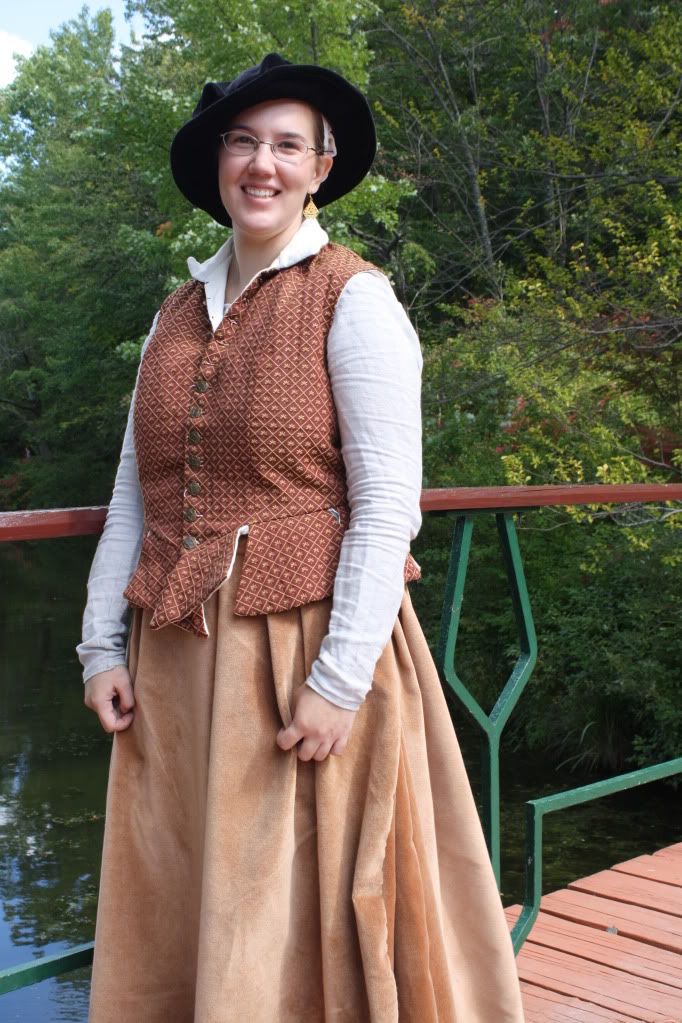
This upper middle class doublet and skirt were made to wear to the local Ren Faires. This outfit has been through several incarnations (and wearers!), which I think really helps it look like clothes, rather than a costume. It's not an "ensemble" that has to go together, just a collection of pieces that have been mixed and matched.
The doublet was made out of some brocade I had lying around. It's lined with linen and buttons up the front. My skirt is made out of red wool. Karen's skirt was made out of some velvet that I had in the stash. Unfortunately, I think it's upholstery velvet, so the skirt is very heavy and really only good for fall faires.
Thursday, February 10, 2011
Gold Venetian

This courtesan gown was designed after this portrait:

which has caused costumers a lot of frustration over the years. The biggest issue is the front of the dress and the lack of closures. Venetian gowns typically have ties or lacing in the front. This one clearly does not. As the model is clearly not a twiggy waif of a thing, the enduring mystery is how her dress stays like that. Super glue? Fairy dust? An omission on the part of the artist?
In the end, a tie had to be added. There was no way around it. My gown is made of silk dupioni with black velvet trim. I wore it once and then it was gifted to a friend from my SCA household, who breathed a whole new life into it. I'm very happy it found it's way to her.

Finished Projects
Subscribe to:
Posts (Atom)


